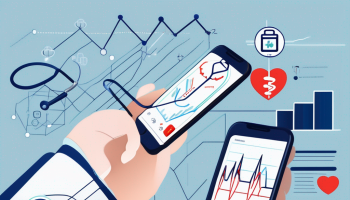Anna Lugger, Director of Content at Sensu
Cloud computing isn’t going anywhere anytime soon. According to the annual State of the Cloud Survey conducted by RightScale, more enterprises are realizing the benefits of cloud, with 84 percent utilizing a multi-cloud strategy. The 2020 Gartner CIO Agenda Survey reveals that cloud computing is among the top three areas (along with analytics and application modernization) in which global CIOs will increase their investment this year.

The advantages of cloud include efficiency, flexibility, and the ability to scale up and down. By relying on a mix of public, private, and hybrid cloud, companies of all sizes can manage costs and meet rapidly changing business needs. Yet, while multi-cloud strategy brings agility and scale, it also introduces challenges like siloed data sources, fragmented toolsets, and increased security threats (to name a few). An enterprise’s ability to realize the benefits of cloud while managing its challenges remains a balancing act.
To thrive in a cloud-based world, you need unified cloud monitoring solutions that help you handle all of the moving pieces by giving you full visibility into your infrastructure, from bare metal to Kubernetes. In this post, we’ll cover could monitoring best practices for multi-cloud monitoring that work equally well with legacy as well as emerging technology — and turn security into a core competency that helps move your business forward.
Best Practices for Multi-Cloud Monitoring
1. Establish a unified monitoring environment
It’s harder than ever to have complete visibility across multi-cloud, multi-generational environments — and harder still when you introduce ephemeral infrastructure platforms such as Kubernetes. Cloud Monitoring best practices include establishing a unified environment for cloud monitoring.
Look for a monitoring solution that gives you a unified monitoring environment — across all of your servers, containers, services, applications, functions, and connected devices. By gaining a holistic picture of what you have, you’re far better positioned to detect and correct problems and avoid costly downtime by devising the best possible cloud monitoring strategy.
2. Bake security into your visibility tool
Too often security and performance data are siloed, which undermines the significance of security in the overall health of your entire infrastructure.
Choose a monitoring solution that lets you collect and analyze security and compliance data alongside performance data for your applications and microservices, and provides a strong RBAC policy and enforcement model to decrease the amount of data accessible by any given user or group. New users and groups get role-based access to what they need to do their jobs, and you can easily add, remove, and manage new users as needed.
Baking security into your monitoring tool (including enacting a robust RBAC model) reduces the likelihood of data getting compromised and maximizes operational efficiency. Eliminating any siloes of performance and security data empowers you to create a holistic picture of what’s going on with your infrastructure — meaning better management and less risk.
3. Choose a solution that easily integrates with the rest of your monitoring ecosystem
Legacy cloud monitoring solutions are largely incompatible with modern DevOps tools (not to mention cloud-based infrastructure), which causes many organizations to juggle multiple tools or try to build custom solutions that achieve what they need, while further complicating workflows and siloing data.
Avoid tool sprawl by choosing a monitoring solution that integrates with your configuration management tools, alerting tools, metrics storage, and visualization platform. An integrated set of DevOps tools for monitoring has the power to improve observability and foster better collaboration between development and operations teams.
4. Treat monitoring like the rest of your DevOps toolchain — as a workflow
Multi-cloud monitoring success requires a shift in perspective: Treat monitoring like the rest of your DevOps toolchain — as an automated workflow that collects data and connects it to the tools and platforms your IT teams use to manage and support the business. At Sensu, we conceptualize this in a monitoring event pipeline that gives you the ability to collect any type of monitoring event, transport and transform the data, and take relevant actions (e.g., alert notifications, incident management, storage, auto-remediation, and more).
Looking ahead
As cloud adoption grows along with emerging technologies like Kubernetes, serverless, IoT, and artificial intelligence, your cloud monitoring strategy needs to evolve along with them. A holistic monitoring approach means better efficiency, improved security, and higher-functioning operations — so you can keep pace with the dynamic nature of hybrid IT and be ready for what’s next.
Disclaimer: This is a guest post by Anna Lugger of Sensu.io. The opinions and ideas expressed here are the author’s own, and in no way reflect GoodCore Software’s position, opinion and policies.





